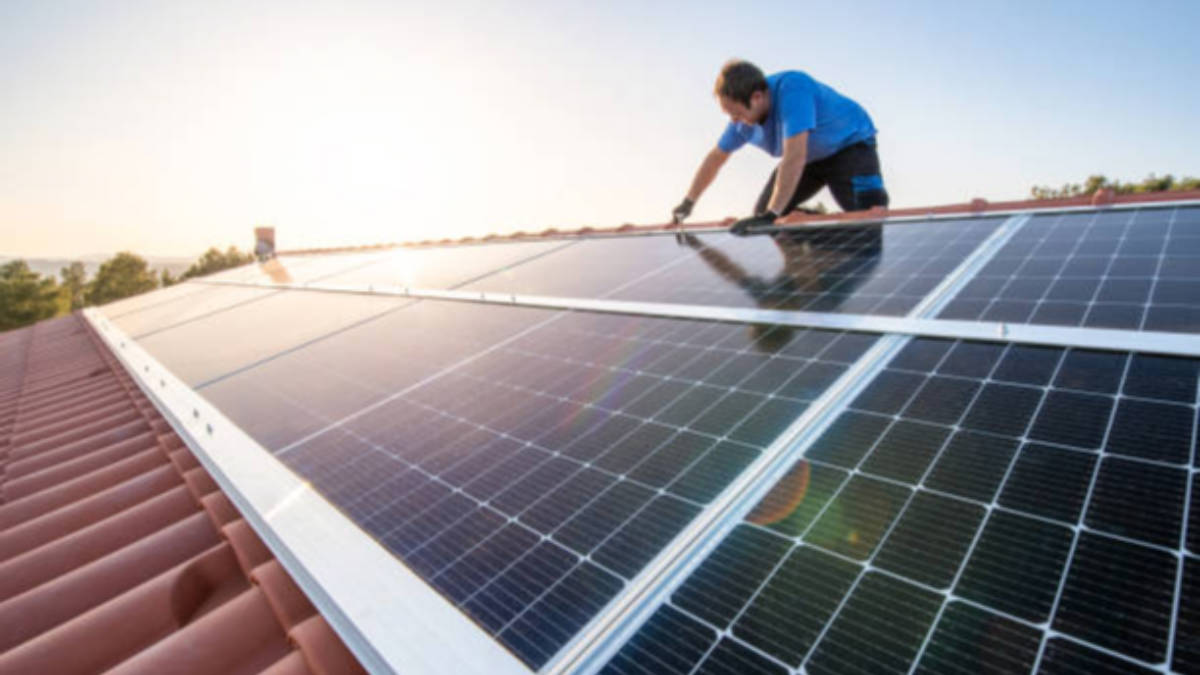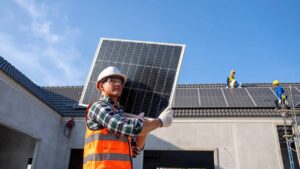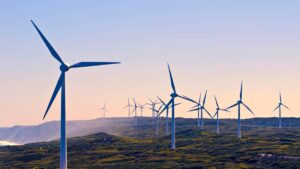ASX Renewable Energy Stocks: China-based Sungrow signs Australia’s largest distribution agreement of 2GW

Pic: Eloi_Omella/E+/Eloi_Omella via Getty Images
- Sungrow will supply Sydney-based wholesaler Solar Juice with products including PV inverters
- Clean Energy Council says rising electricity prices highlight need for an orderly transition away from fossil fuel generation
- ASX lister State Gas agrees on joint venture terms to investigate carbon management project
Global leader in photovoltaic (PV) inverter solutions, Sungrow, has signed a 2GW supply contract with Solar Juice – one of its long-term distribution partners in Australia.
Under the agreement, Sungrow will offer Solar Juice its full range of products, including PV inverters, storage systems, batteries and other accessories which will supply the many solar projects for Australian residents.
Sungrow says the 2GW capacity makes this contract the largest and most comprehensive contract the Australian solar market has ever seen.
“The 2GW milestone will help Sungrow capture the market opportunities and strengthen the brand involvement in Australia,” Sungrow country manager Joe Zhou said.
“It also represents a boost for both brands. With Solar Juice, we will provide clean, reliable and renewable solutions for each customer.”
According to reports, Solar Juice has been the largest distributor of premium inverters for rooftop solar in Australia since 2013, selling over 300MW in 2019.
Clean Energy Council: Australian Fed’s need to reinvigorate the NEM
The Clean Energy Council says rising electricity prices highlight the need for Australia’s next Federal Government to prioritise an orderly transition away from fossil fuel generation, with a series of critical reforms of the National Electricty Market (NEM) needed to manage the pace of change.
“We are at a crossroads,” Clean Energy Council chief executive Kane Thornton said.
“There is a strong future for a NEM that allows sharing of clean energy across state borders to ensure that all Australians have access to cheap, zero-carbon electricity.
“However, the Federal Government needs to have a plan to reinvigorate the NEM, providing clear leadership on how Australia can best use renewables to deliver the lowest cost decarbonisation of the economy.”
The Australian Energy Market Operator’s (AEMO) latest Quarterly Energy Dynamics report revealed that coal generation outages and a lack of transmission investment have contributed to higher wholesale prices, which feed directly through to higher prices for end consumers.
Wholesale electricity prices averaged $87 per MWh in the first three months of 2022, up 141 per cent from a year earlier and two-thirds higher than the final three months of 2021.
A combination of coal generator failures and increased gas and coal prices has been a primary driver of these higher prices, the report states.
“Without the Federal Government stepping up and again taking leadership, there’s a real likelihood we will enter a period of energy balkanisation, where each state races the other to build new generation and transmission,” Thornton added.
To ASX renewable energy news
State Gas (ASX:GAS)
Queensland-based gas exploration and development company, GAS, has entered a joint venture agreement for a carbon management project in Central Queensland with Rockminsolutions to investigate the potential of the Buckland Basaltic Sequence.
The Buckland Basaltic Sequence is an extensive area of Tertiary-aged basaltic ignimbrites (volcanic ash deposits) up to 330m thick.
GAS says characteristics of this deposit (as nonwelded ignimbrites) suggest very high permeability and porosity, facilitating the availability of the minerals within the basalt to react rapidly with carbon dioxide.
Basalt rocks are highly reactive and contain the elements needed for permanently immobilising carbon dioxide through the formation of carbonates such as calcium carbonate and magnesium carbonate.
In these forms, the carbon is stable and safe.
Carbfix in-situ mineralisation process could be a potential ‘game-changer’
After initially entering a Memorandum of Understanding (MOU) with Rockminsolutions last year, State Gas executive chairman Richard Cottee said the company is pleased to progress its relationship and embark upon this carbon management initiative.
“While State Gas remains focussed on development of its Reid’s Dome and Rolleston-West Gas Projects, the carbon mineralisation approach has the potential to be a game-changer in carbon management,” he said.
GAS says the Carbfix in situ mineralisation process is one attracting significant international attention, with the US Department of Energy demonstrating the technology at Washington state, and Rio Tinto recently announcing a project in Minnesota, USA.
The process involves dissolving the carbon dioxide in water, creating a stable solution which can be readily pumped into formations much shallower than those required for traditional carbon sequestration.
The high porosity of the Buckland Basalts is expected to facilitate the retention of the carbonated water without the need for a geological seal.
As a result, the Carbfix process has the potential to provide a more secure carbon storage solution at substantially lower cost than traditional processes.
State Gas will now undertake investigatory works to progressively farm-in to Rockminsolutions’ EPM 27596.
Should the potential of the formation for carbon management be proved, the options for development include establishing hydrogen manufacture, direct air capture, or creation of a commercial carbon management hub in Central Queensland.
State Gas (ASX:GAS) share price today
Related Topics
UNLOCK INSIGHTS
Discover the untold stories of emerging ASX stocks.
Daily news and expert analysis, it's free to subscribe.
By proceeding, you confirm you understand that we handle personal information in accordance with our Privacy Policy.








